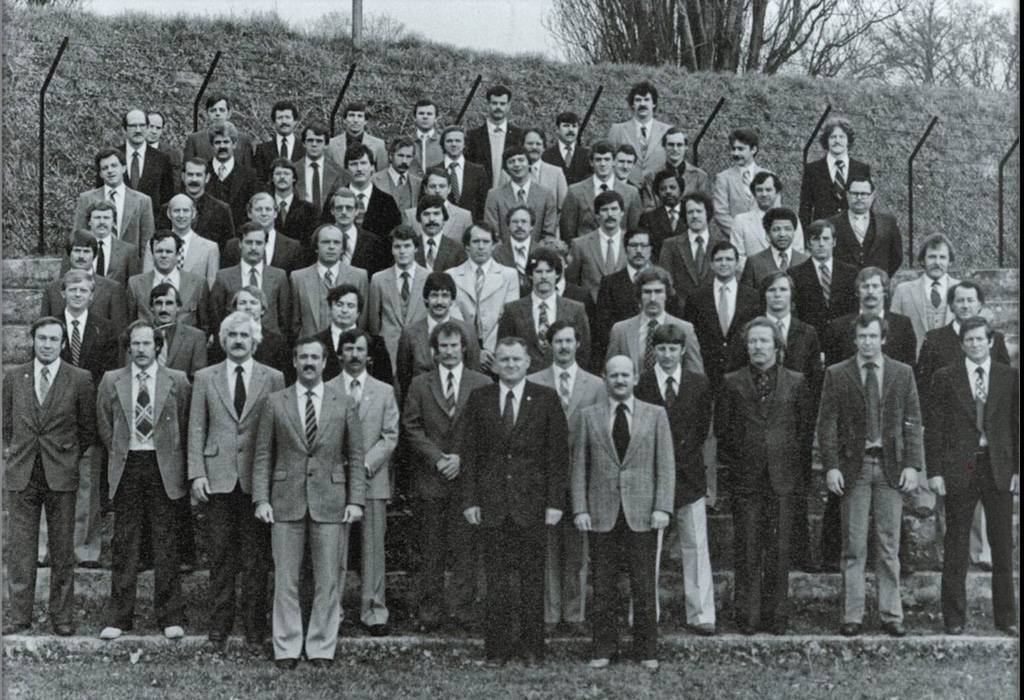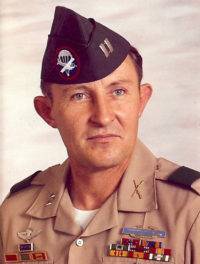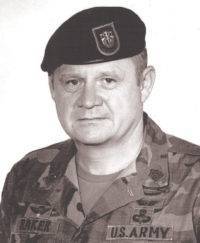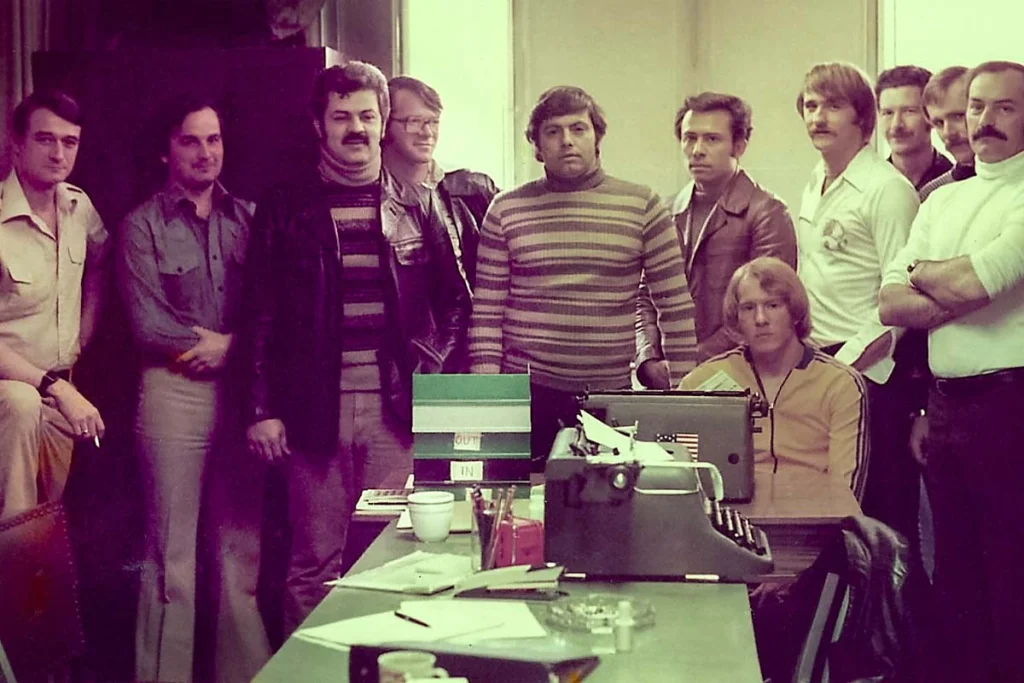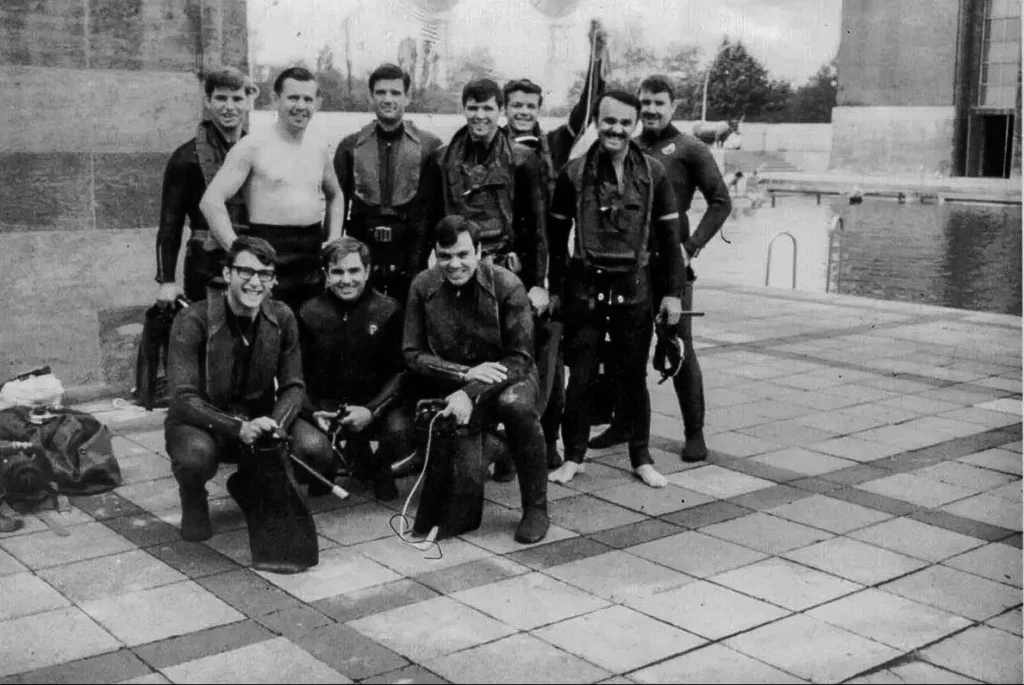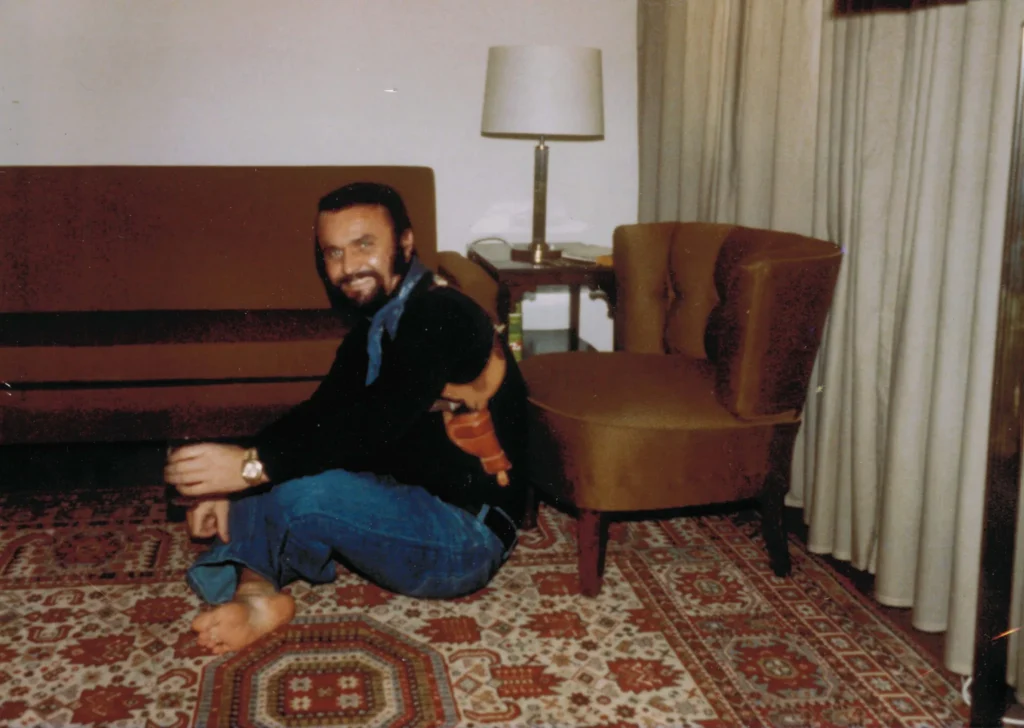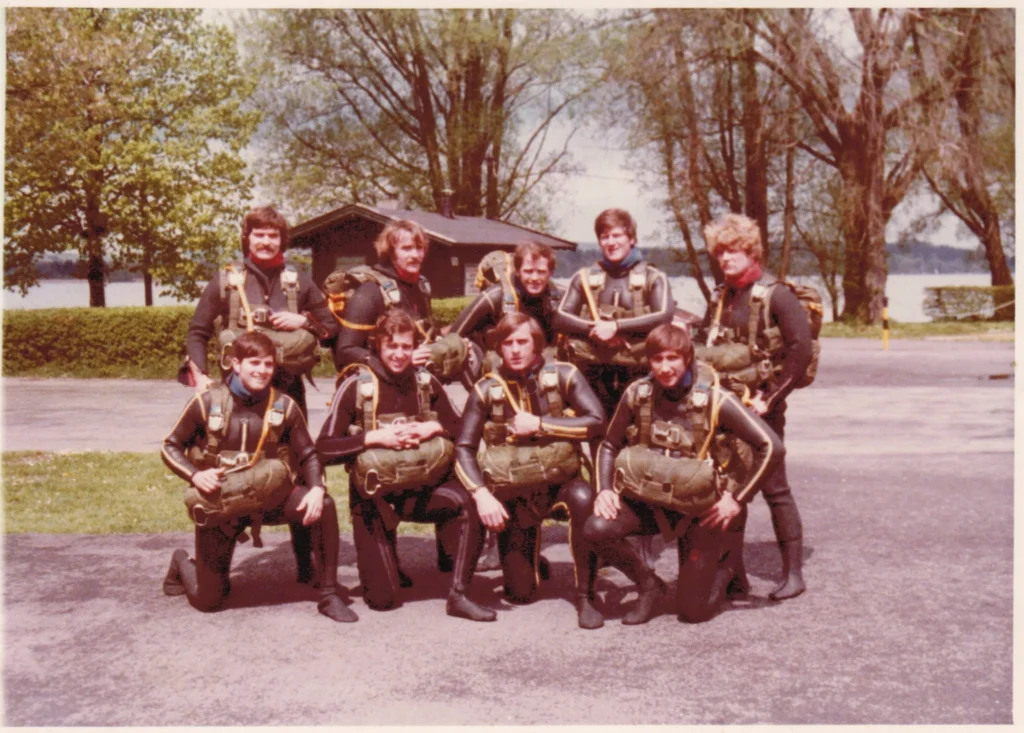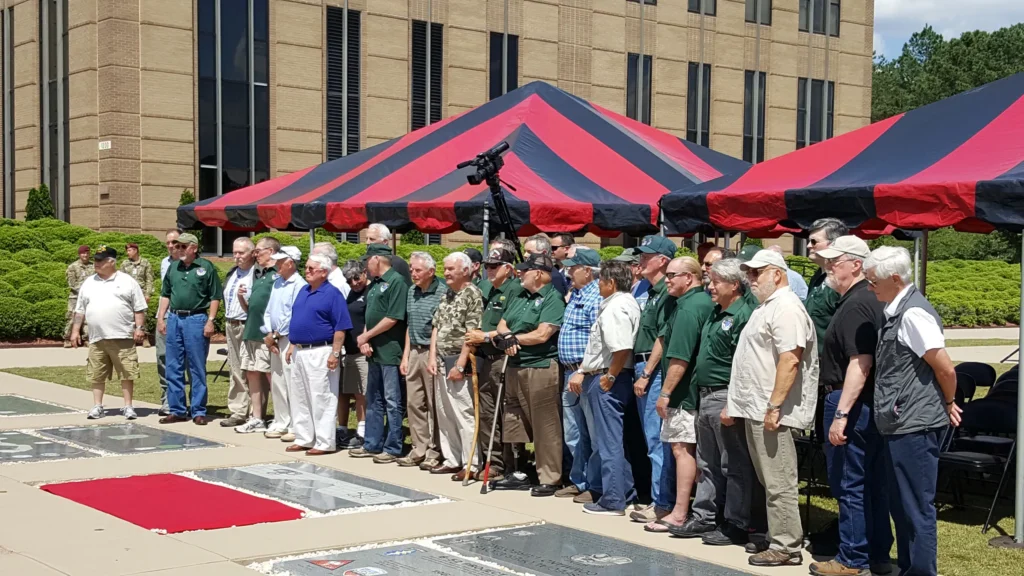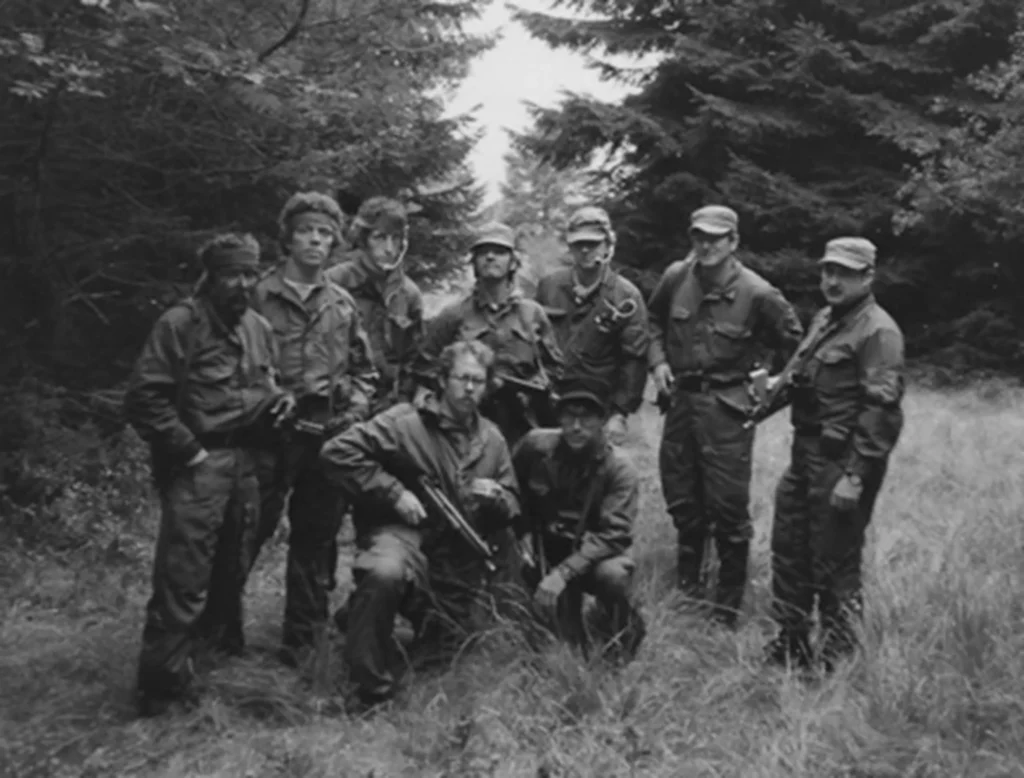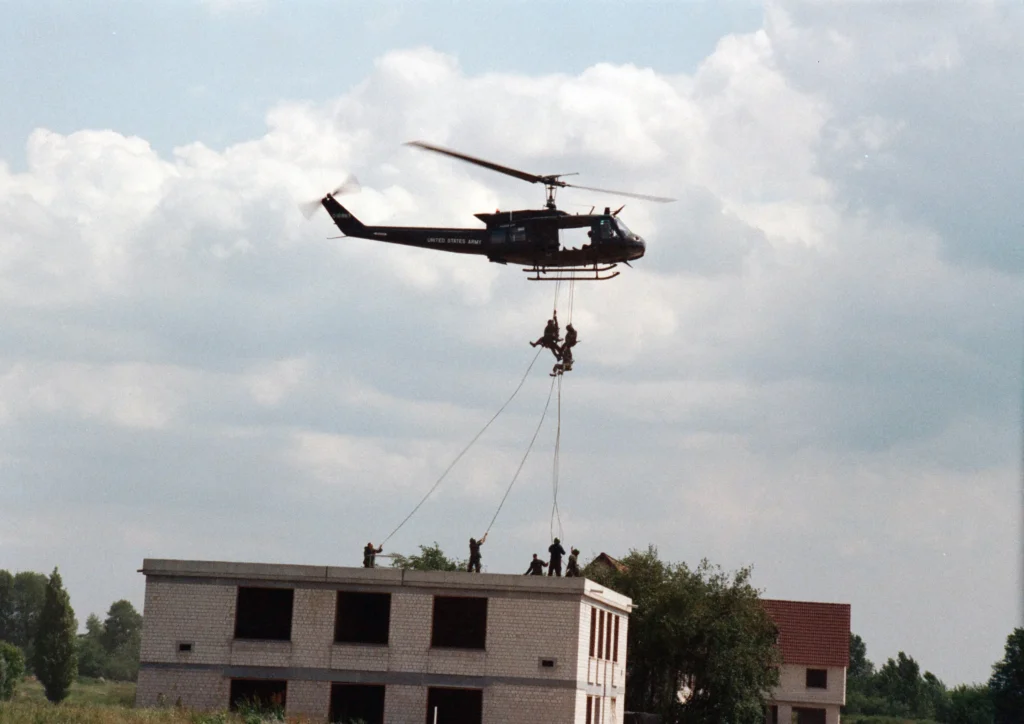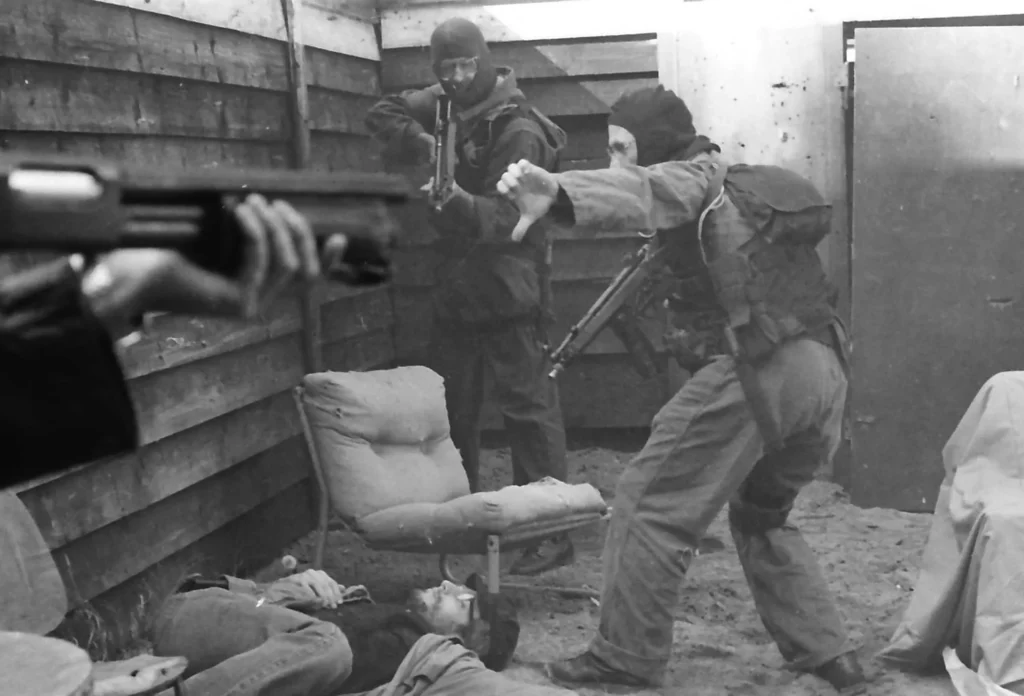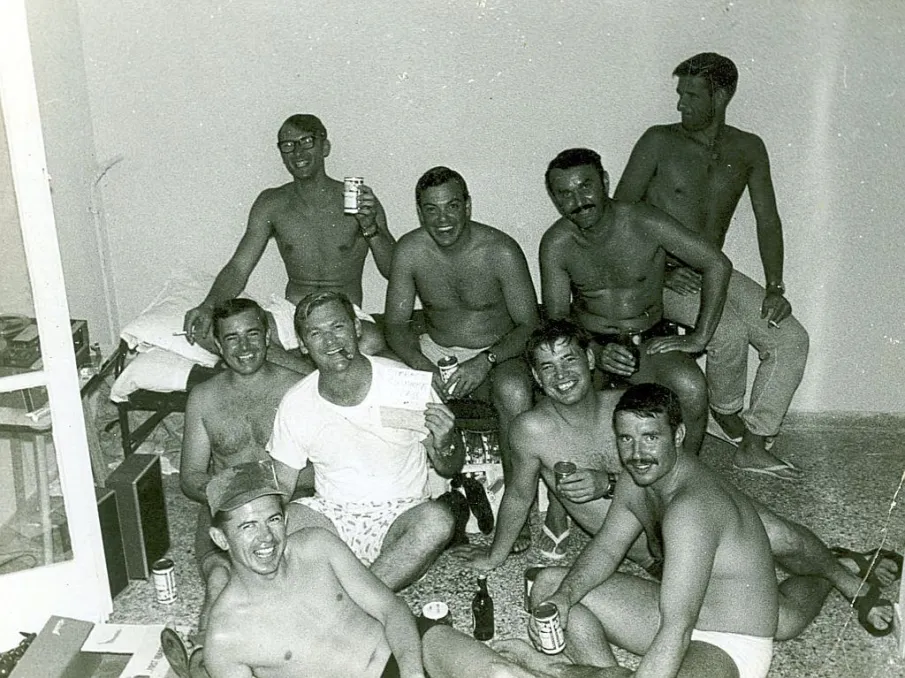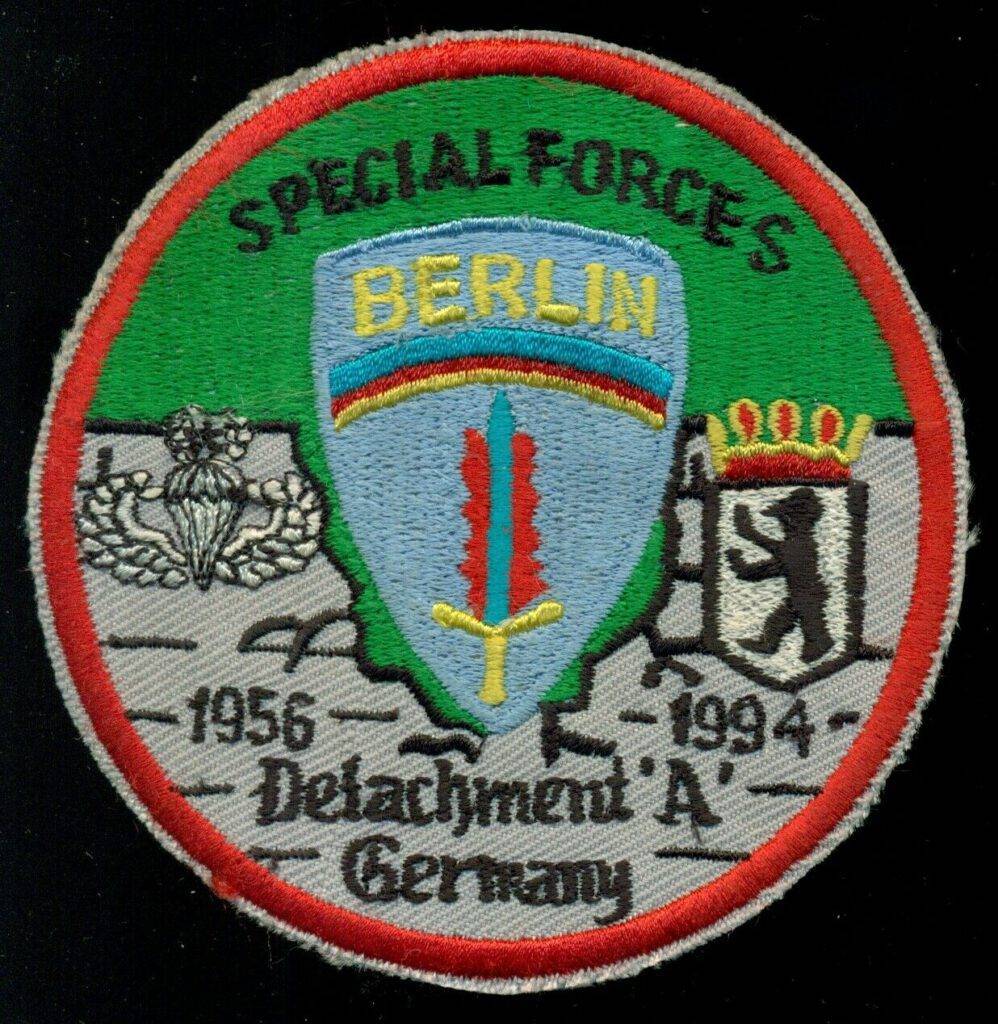In 1956, six modified Special Forces Operational “A” Detachments from the 10th Special Forces Group (Airborne) stationed in Bad Tölz were relocated to West Berlin as the 7781 Army Unit (also known as 39th SFOD) and embedded within HQ and HQ Co., 6th Infantry Regiment. Each team was composed of one Master Sergeant and five enlisted team members. The overall OIC was MAJ Maltese and his XO, CAPT Barton. After several moves in 1958 the unit found its final home at Andrews Barracks, West Berlin, assigned to HHC, US Army Garrison, Berlin, with its new name — Detachment “A” (DET-A). DET(A) was a clandestine unit constantly on high alert status 24 hours a day. In 1962 DET(A) was separated from the Garrison and became Detachment(A), Berlin Brigade, US Army Europe, which it remained until deactivation in 1984.
Detachment(A) was a unique and diversified, unconventional clas-sified unit. With staff, the unit numbers were approximately 90 men. Detachment(A) encompassed all the Special Forces missions over its existence: unconventional warfare, stay behind, direct action, and anti-terrorist. For example when I arrived in 1969, they operated under the cell concept. Then in the late sixties transitioned to six, 12-man “A” teams, each having its own mission requiring different and multiple skill sets including scuba, HALO, etc.
A certain breed of troop were instrumental in Detachment(A)’s missions. They brought in depth knowledge of other nations, language capabilities and other much needed skills and knowledge essential to Detachment(A). Some of these men were products of the Lodge Act, and many of these troops still had families behind the Iron Curtain. Men like Peter Astalos who served in the Romanian and German armies during World War II; Martin Urich who participated in the largest tank battle of World War II “Kursk”, and many more.
In later years during the Cold War another breed of men were join-ing the Special Forces originating from all over Europe. Men such as MG Sidney Shachnow born in Kaunas, Lithuania, imprisoned for three years during World War II, joined Special Forces in 1962 and served for the next 32 years in Special Forces rising through the ranks to become a Two Star General. He was the Commander of Detachment(A) in the early 1970s. Hermann Adler, Team 3 Leader 71-72, was born in the Sudentenland, Czechoslovakia.
After MG Shachnow’s departure from Detachment(A), his replacement was relieved of duty in front of our morning formation by the Berlin Brigade DBC. He was replaced along with several other key individuals who were not Special Forces qualified. Under their direction we were all put back in uniforms. Our Detachment(A) sign logo now had a big Airborne logo appended to it. We were assigned various duties to train the Infantry units of the Berlin Brigade, i.e., EIB training, Scout Swimmer, etc. Their NCO’s looked to us as cadre.
These command changes had a detrimental impact on the unit and compromised DET(A)’s mission.
The unit then got a new commander. Colonel Stanley Olchovik, who was born in Czechoslovakia, was an accomplished linguist and had extensive Special Forces operational experience.
CSM Jeffrey Raker, another standout born in Germany, was also assigned to Detachment(A). He volunteered for Special Forces in 1963, and rose up to Command Sergeant Major. He served as the Sergeant Major of Detachment(A) from 1977-1981.
Colonel Olchovik and Sergeant Major Raker restored Detachment(A) to its primary classified missions. Under their leadership the unit was able to regroup and achieve 100% language qualification, and hone its unconventional warfare and special operations skills. They set up training with the Bundesgrenzschutz GSG9, SAS, and Special Berlin Police units. SGM Raker selected and trained Detachment(A) individuals who made the reconnaissance to Iran to plan Operation Eagle Claw – Iran Hostage Rescue Mission 1979.
He then selected the Detachment that was to rescue the hostages held at the Ministry of Foreign Affairs, Operation Storm Cloud.
CSM Raker served over 30 years in the Army.
It was men like these that made Detachment(A) what it was — a clandestine unit of Green Beret commandos on high alert 24 hours a day operating in the Cold War era.
Compiled/Written by Bob Charest, Detachment(A)
Team 1 Scuba, Detachment(A) Team 3 Team Sergeant (1969-1972) Detachment(A) Team 2, Detachment(A) Commo Chief (1973-1978)
